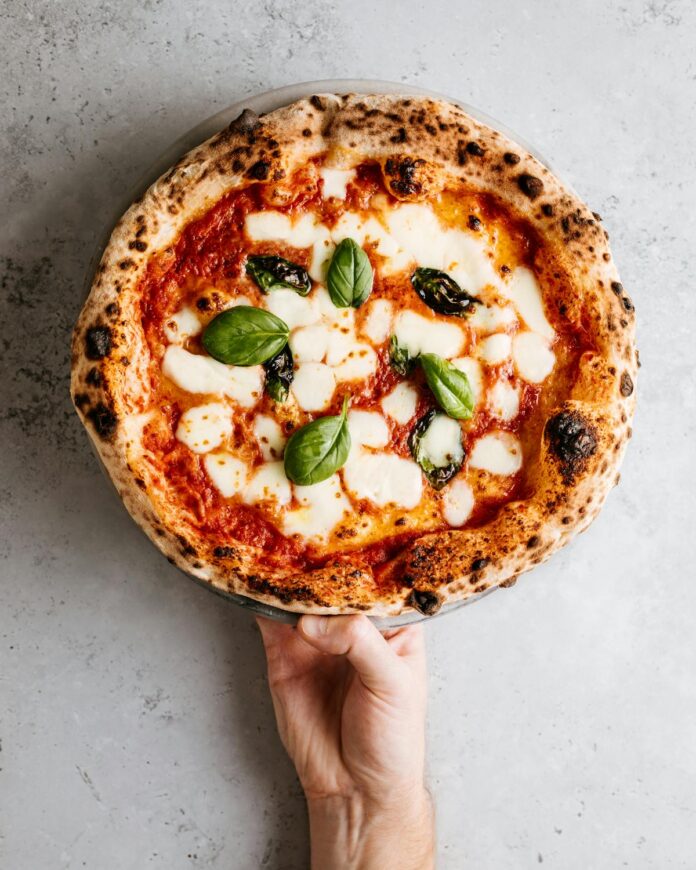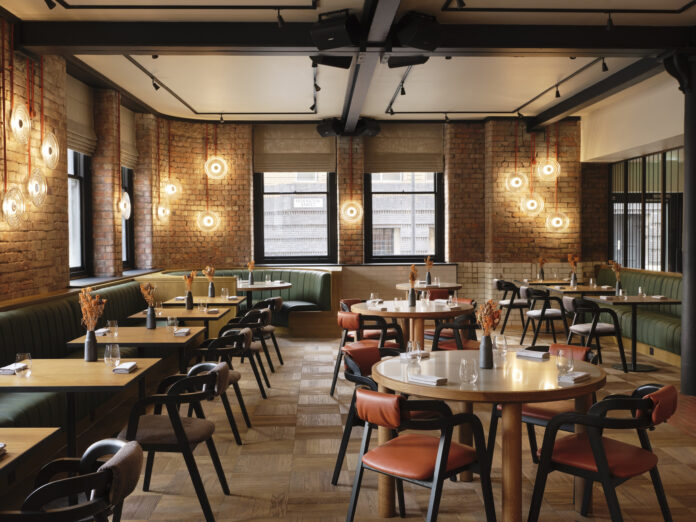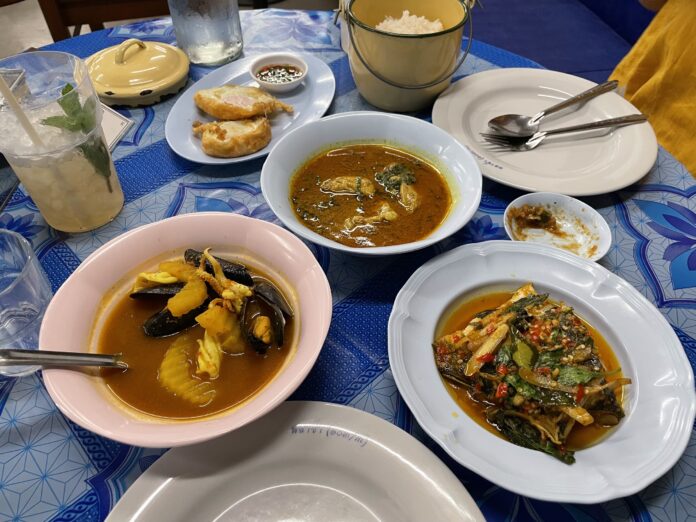Most visitors to Malta follow the same tired route: a day in Valletta, an Instagram photo at the Blue Lagoon, perhaps a bus tour to the temples. They leave thinking they’ve seen the island, when really they’ve only scratched its sunburnt surface. The real Malta – where fishermen still paint protective eyes on their boats, where village bakeries have been run by the same family for fifty years, where prehistoric sites sit undisturbed on clifftops – requires more effort to find, but rewards it generously.
Malta is deceptive. At just 316 square kilometres, it seems manageable, easily conquered in a long weekend. But 7,000 years of continuous habitation have layered this tiny archipelago with complexity. Phoenicians, Romans, Arabs, Normans, and the Knights of St John have all left their mark, creating a cultural density that feels disproportionate to the geography. Add to this a cuisine that blends Sicilian technique with North African spices and a peculiar British influence, and you have a destination that refuses to be easily categorised or quickly consumed.
The challenge, then, is knowing where to look and what to prioritise. This guide cuts through the tourist waffle to give you specific, practical advice on experiencing Malta properly – from the historical sites genuinely worth your entrance fee to the family-run restaurants where locals actually eat.
Valletta: Separating Substance From Spectacle
Valletta presents an immediate problem: it’s both a UNESCO World Heritage Site and a cruise ship port, meaning its narrow streets simultaneously contain genuine historical treasures and tat shops selling mass-produced lace.
For those seeking unforgettable days exploring Malta, learning to distinguish between the two transforms your visit from a superficial tick-box exercise into something genuinely memorable.
St John’s Co-Cathedral (€15 entry, book online at stjohnscocathedral.com) is Valletta’s standout attraction. The exterior is deliberately austere, but the interior explodes with gilded excess. Every inch of the vaulted ceiling tells stories from the life of St John, painted by Mattia Preti in the 1660s. The floor is entirely composed of marble tombstones commemorating individual Knights – you walk on four hundred years of dead crusaders.
But you’re really here for Caravaggio. ‘The Decapitation of Saint John the Baptist’ hangs in the oratory, and it’s the only painting the artist ever signed – in John’s spilt blood, naturally. Go when the cathedral opens at 9:30am, before cruise ship groups arrive around 10:30am. The difference in experience is substantial.
Upper Barrakka Gardens offers the best free views in Malta, looking out over Grand Harbour. Time your visit for noon to catch the cannon firing ceremony – touristy, yes, but genuinely part of Valletta’s living heritage rather than performance for visitors.
For a different perspective, Casa Rocca Piccola (€9, 74 Republic Street) is a 16th-century palazzo still occupied by the de Piro family. The 9th Marquis often conducts tours himself, discussing everything from the palazzo’s air raid shelter to his family’s relationship with successive rulers of Malta. It’s personal, occasionally eccentric, and far more enlightening than formal state rooms.
Mdina, twenty minutes inland by bus, offers a completely different experience. The medieval capital feels deliberately frozen, nicknamed the Silent City with good reason. Only residents can drive within the walls, and with a population of just three hundred, you can walk the narrow streets for half an hour encountering no one.
Visit late afternoon, stay for dinner, and walk the empty streets after dark when lanterns create pools of amber light. Fontanella Tea Garden (1 Bastion Street) has the best view – arrive for sunset, order their famous chocolate cake, and watch the light fade across the island. Then walk the empty streets. This is one of the few places in Malta where you can convincingly imagine the pre-tourism past.
Read: 10 of the best destinations in Europe for an unforgettable yachting experience
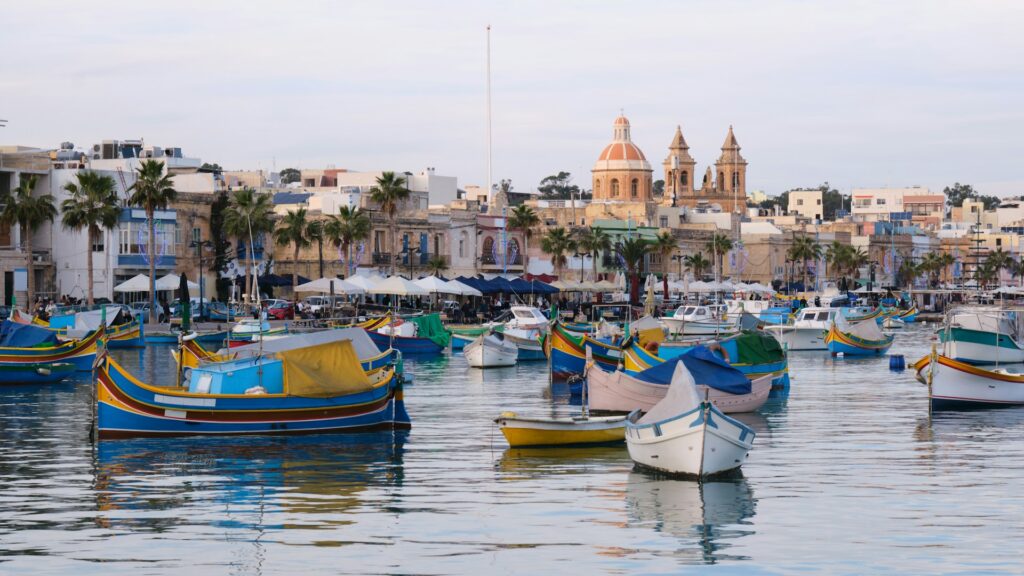
The Prehistoric Temples: Which Ones Matter
Predating Stonehenge by a thousand years and the Egyptian pyramids by several centuries, Malta’s temples represent something genuinely remarkable: megalithic structures dating from 3600-2500 BC that are the world’s oldest freestanding structures. Sure, most visitors arrive expecting drama and find low stone walls in scrubby fields, but the temples require context and imagination, which is why choosing the right sites matters.
Ħaġar Qim and Mnajdra (combined ticket €10, near Qrendi) are the most rewarding, partly because of the structures themselves but mostly because of their clifftop setting. The temples overlook the sea, oriented toward the sun’s movements, and visiting in late afternoon when the honey-coloured limestone glows gives you some sense of their original impact. These weren’t just religious buildings; they were deliberately positioned power statements from a culture we know almost nothing about. Allow ninety minutes, wear sun protection, and bring sturdy shoes.
The Hypogeum of Ħal Saflieni in Paola is different: an underground necropolis carved from living rock, decorated with red ochre paintings. The acoustics in the main chamber are remarkable – certain frequencies resonate through the carved rock, suggesting the space was designed for ritual chanting. Only eighty visitors are admitted daily, and tours must be booked weeks in advance through heritagemalta.org. Photography is forbidden, and if you’re over six foot, you’ll spend the hour stooping. But if you can secure tickets, it’s utterly unlike anything else in Malta.
Skip Tarxien Temples – they’re in a residential area, lack dramatic setting, and feel more reconstructed than ancient.
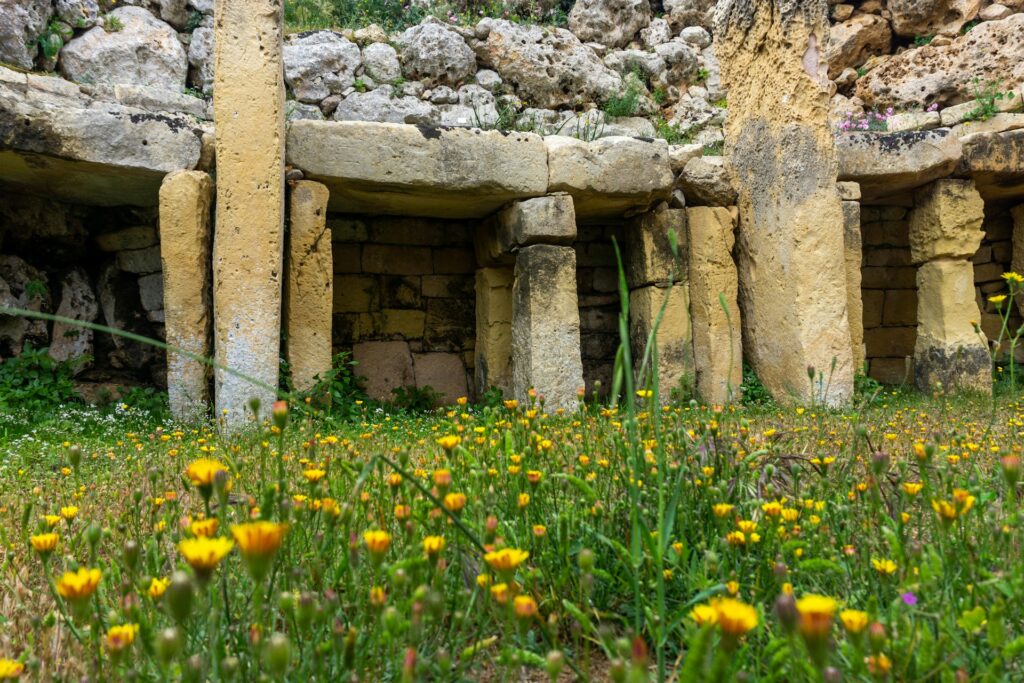
Eating Malta: Where Locals Go
Maltese food reflects the island’s position and history: Sicilian techniques form the base, but you’ll find North African spicing, British influences, and distinctly local traditions that emerged from centuries of scarcity and creativity.
The national dish is fenkata – rabbit stew – cooked slowly with red wine, garlic, bay leaves, and tomatoes. For authentic versions, try Ta’ Marija in Mosta (31 Constitution Street). Family-run since the 1960s, occupying an old farmhouse with decor unchanged since 1985, this is Maltese comfort food at its most genuine. Expect €18-22 per person for fenkata with pasta, bread, and wine. Book ahead on weekends.
Pastizzi are diamond-shaped pastries filled with either ricotta cheese or mushy peas, costing forty cents and genuinely brilliant. The key is eating them warm, straight from the oven. Crystal Palace in Rabat (5 Saqqajja Square) has been producing exemplary pastizzi since 1969. It’s a hole-in-the-wall operation: point, pay coins, eat standing on the pavement. Open from 6am, cash only.
Lampuki pie is seasonal (August-December) and worth seeking. Lampuki is dorado, combined with tomatoes, olives, capers, and vegetables, baked in pastry. Roofline in Sliema does a modern version (€16) with refined presentation.
Marsaxlokk Sunday Fish Market is where Maltese families buy their seafood. The harbour fills with boats on Sunday morning, fishermen selling directly from plastic crates. Market stalls sell ħobż biż-żejt – Maltese bread rubbed with tomatoes, soaked in olive oil, topped with capers and tuna. It’s €3-4 and makes an excellent breakfast. Arrive by 8:30am before tourist buses. By 10am the best fish is gone.
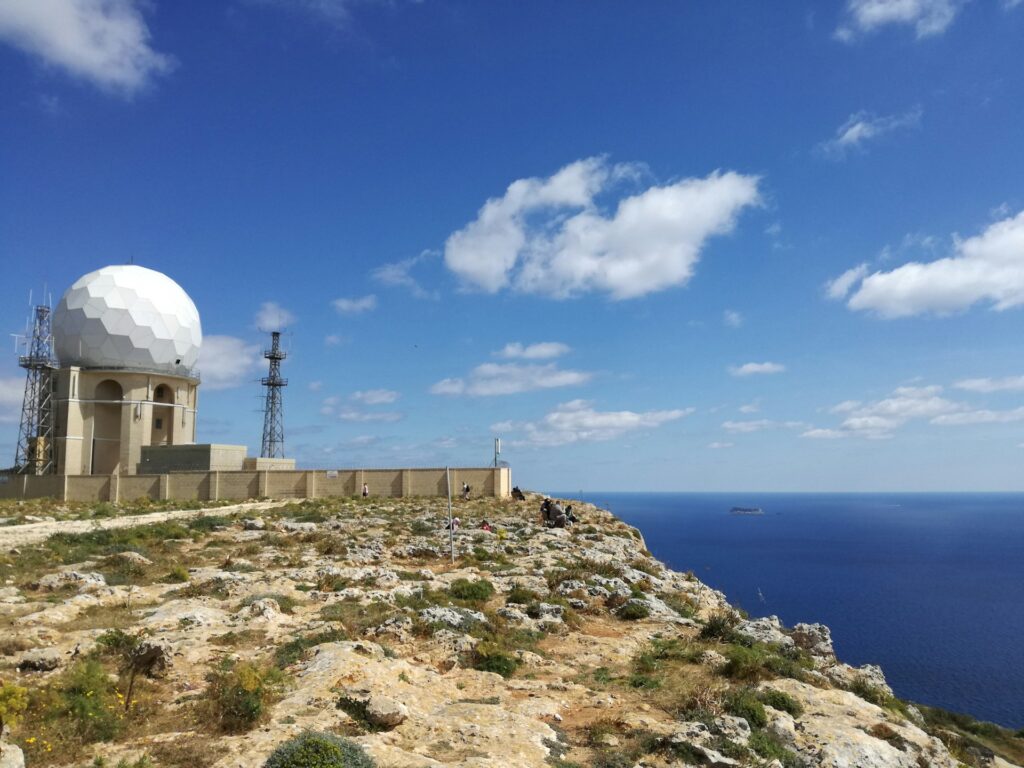
Landscapes Beyond The Shoreline
Malta’s natural beauty tends to be dramatic rather than lush – limestone, seawater, scrubby vegetation, and relentless bright light. Dingli Cliffs, at 253 metres Malta’s highest point, provide sweeping views south to the open Mediterranean. The cliff edge path from Dingli to Għar Lapsi covers roughly five kilometres, mostly flat. Late afternoon light turns the limestone golden. There are no facilities – bring water and sun protection – but the walking is easy. At Għar Lapsi you can swim from flat rocks if the sea is calm.
The Blue Grotto suffers from its own popularity. By mid-morning, the inlet fills with tour groups. The solution is arriving at 8am when boats start running (€10 for twenty minutes), before the coaches arrive. Better still, skip the grotto and swim at Wied iż-Żurrieq, where the same luminous water is accessible from shore.
Gozo: Malta’s Rural Character
Gozo, reached by ferry from Ċirkewwa (€4.65 return per person, every 45 minutes), offers Malta as it was fifty years ago. The island is greener, less developed, and moves at a noticeably slower pace.
A day trip follows a logical route: Ġgantija Temples (€9, Xagħra) first at 9am for crowd-free photos. These temples are older and more complete than Ħaġar Qim, with massive stone uprights still standing.
Lunch at Ta’ Rikardu (4 Cathedral Street, Victoria), which serves proper Gozitan food: ġbejna (sheep’s cheese) with honey, fresh bread, bigilla (broad bean paste), local wine. Simple, unfussy, €12-15 per person.
Victoria’s Citadel (free) dominates the island’s centre – a fortified city where Gozitans sheltered during Ottoman raids. The views from the fortifications show the entire island: patchwork fields, stone farmhouses, distant sea.
From Victoria, it’s a short drive to the Basilica of the Blessed Virgin of Ta’ Pinu, Gozo’s most important pilgrimage site. The neo-Romanesque church, built in the 1920s, stands isolated in the countryside—deliberately so, marking the spot where a local woman heard the Virgin Mary’s voice in 1883. The interior is lined with testimonials and offerings from pilgrims, creating an atmosphere of genuine devotion rather than tourist spectacle. Even if you’re not religious, the basilica’s setting and the sincerity of the pilgrims who visit make it worth twenty minutes. Entry is free.
Late afternoon, drive to Dwejra on the west coast. The Azure Window collapsed in 2017, but the site retains drama. The Inland Sea is accessible by small boat (€4), and the entire coastline is geologically spectacular: fractured limestone cliffs, collapsed caves, that peculiar Maltese combination of beauty and harshness.
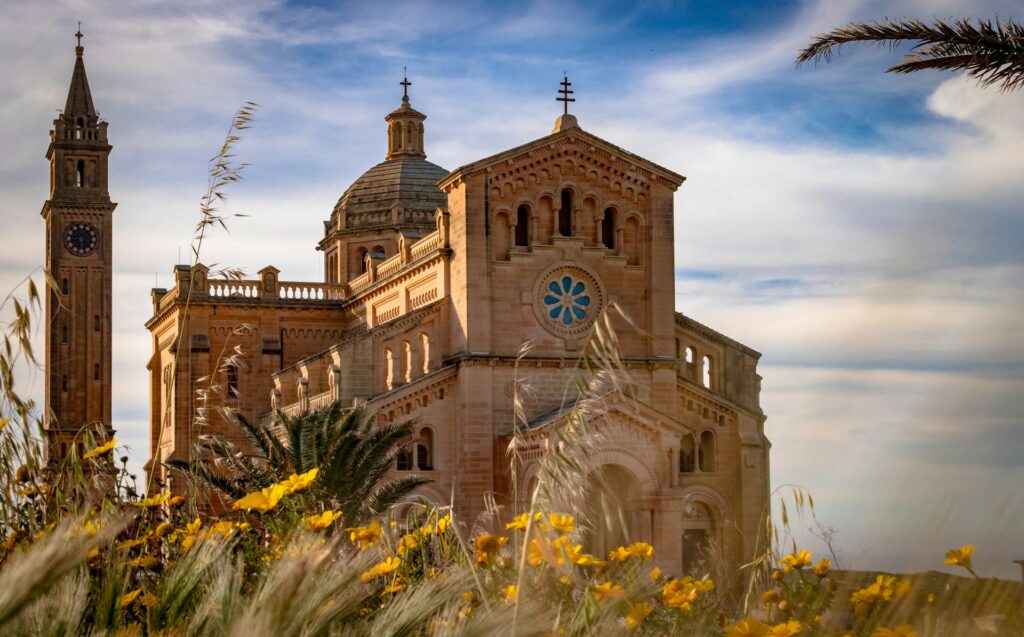
What You Need To Know
Best time: April, May and October offer the best combination of weather (20-25°C), daylight, and manageable crowds. Summer reaches 35°C with peak prices. Winter is mild (15-18°C) but some sites have reduced hours. Nevertheless, Malta remains one of the most popular destinations for some winter sun with Brits.
Transport: Buses are cheap (€2 for two hours, €21 for seven days) but infrequent to remote sites. Hiring a car (from €25/day) transforms your flexibility, particularly for temples and Gozo. GPS is essential – signage is often inadequate.
Money: Malta uses euros. Cards widely accepted in cities; carry cash for markets and villages. Restaurant meals range from €12-15 (casual) to €30-40 (proper dinner).
Pack: High-factor sun cream, comfortable walking shoes with good grip, modest clothing for churches (covered shoulders and knees required), light jacket for evenings October-April.
Malta rewards the curious and flexible. The best experiences emerge not from following guidebook itineraries but from being open to discovering a village festa, conversing with a Marsaxlokk fisherman, or losing yourself in Mdina’s empty streets at dusk. This is a small island with a large story, and giving it the time and attention it deserves transforms a beach holiday into something considerably more substantial.


